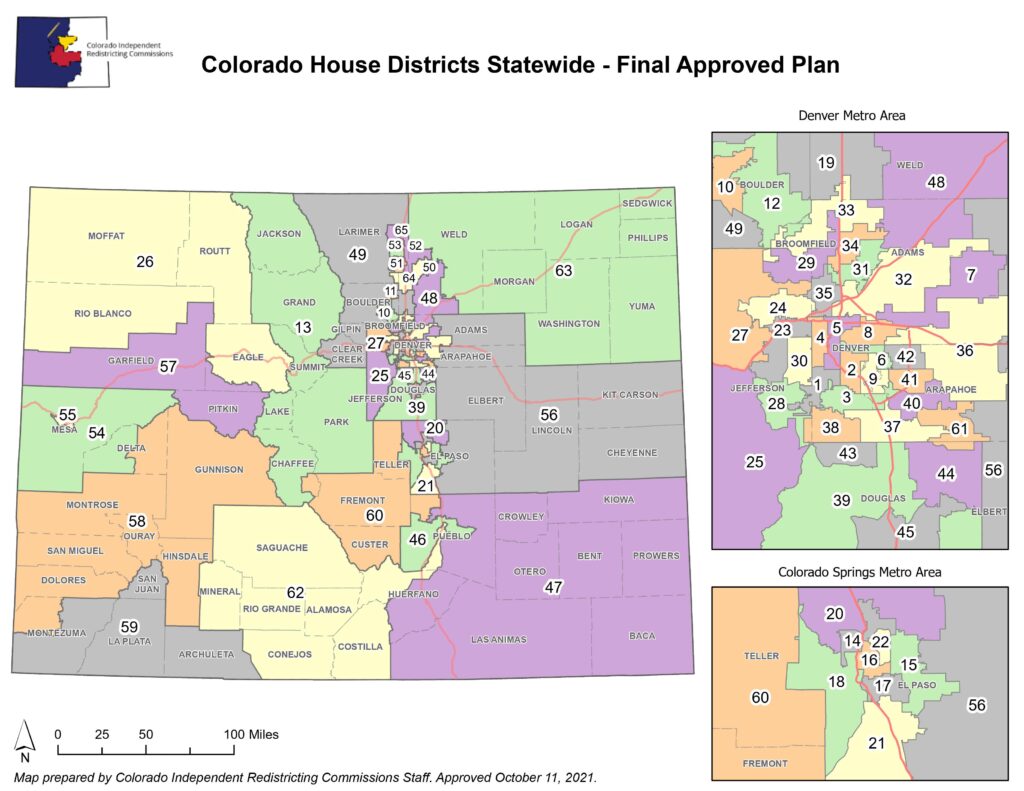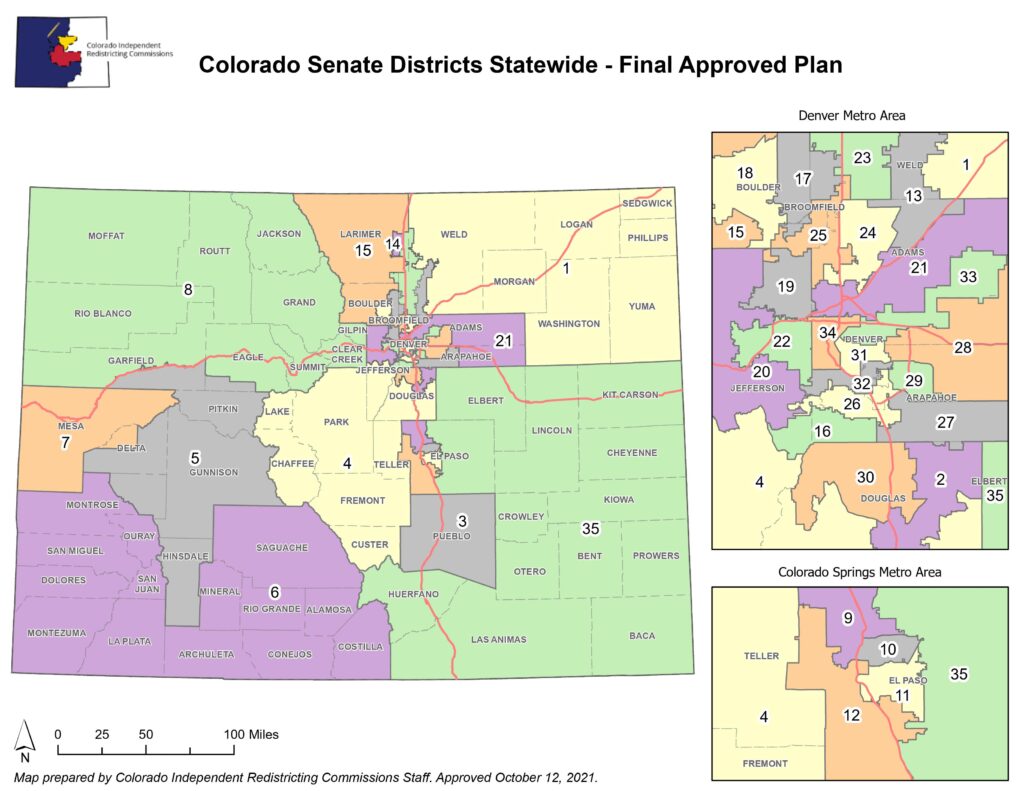
Colorado’s new redistricting process is in the history books.
On Monday, the state supreme court approved new statehouse maps, the last major step in the process to set new political boundaries ahead of next year’s elections. All that remains is for the Redistricting Commission to file the state maps, as well as the new congressional map, with the Secretary of State’s office. Once filed, the maps will be official.
In a unanimous ruling, the justices took a narrow view of their role in the process. They concluded that members of the Independent Legislative Redistricting Commission didn’t abuse their discretion when they approved the House and Senate maps, and so those maps should stand.
“It is not our task to determine whether other plans could have been adopted. Nor is it our role to decide whether we might have adopted different plans were we acting in the first instance,” wrote Justice Richard Gabriel in the court’s opinion. Instead, “we must approve those Plans unless we conclude that the Commission abused its discretion.”
Five groups filed briefs urging the court to require changes to the final maps. Those ranged from a Latino advocacy group arguing the Senate map unnecessarily divides Lakewood, to a former Weld County politician objecting to how the map splits up Greeley, and a private citizen concerned that neither map does enough to ensure competitive districts.
But in its ruling, the court discarded all of those concerns, noting that in most cases the commission had soundly documented the reasoning for the choices it made and that none of the decisions made by the commissioners violated the requirements of the state constitution.
Politically, the new maps make it likely the state House and Senate will stay in Democratic control, barring any significant electoral swings.

The Redistricting commission used an aggregate of eight recent statewide elections to calculate the political lean of each district. Based on that calculation, Democrats have a five-point or better advantage in 36 House seats. Republicans hold a similar advantage in 20 districts. And nine seats are likely to swing, with a margin of less than 5 percent.
On the Senate side, there are 18 districts where Democrats hold a five-point or better advantage, nine where Republicans hold a better than five-point margin, and eight potentially swing districts.

Groups representing Colorado Republicans filed briefs in support of the final maps.
When it comes to Latino representation, which has been an issue of concern throughout the redistricting process, the new maps create eight Senate districts and sixteen House seats where the population is 30 percent or more Latino.
The Colorado Latino Leadership, Advocacy and Research Organization, which participated heavily throughout the redistricting process, and filed briefs opposing the final legislative and Congressional plans, released a statement supporting the ruling.
“These maps provide the opportunity to make (meaningful Latino representation) a reality for the next decade,” the statement reads. “Although we do not agree with every element of the approved maps, we are proud of the work and confident in the outcome.”
With district boundaries finalized, candidates can move right into the 2022 campaign season. The next few weeks are likely to see a spate of hopefuls declaring for statehouse races. Already on Monday, Democratic state Rep. Kyle Mullica announced he will join the race for Senate District 24.
- He’s running — harder: An interview with Colorado Democratic Congressman Ed Perlmutter
- Republican state Sen. Barbara Kirkmeyer announces she’s entering the race for Colorado’s newest — and swingiest — congressional seat
- GOP Weld County commissioner Lori Saine is running in Colorado’s new congressional district
- Adams County Commissioner launches campaign for new congressional district awaiting approval








